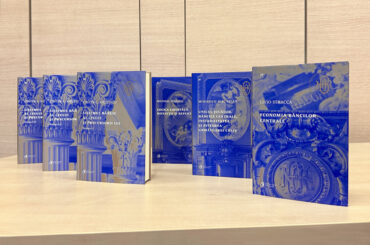The expansion of the crypto assets sector, including “stable coins”, is welcomed by those involved in this activity and by some governments. But crypto assets can harm financial stability; in addition, they endanger the policies of central banks.
“Crypto assets, including stable coins, form a parallel circuit, which erodes the power of central banks, the effectiveness of monetary policies.
The rise of crypto assets has taken place after the financial crisis that broke out in 2008, when many blamed central banks and governments for the excesses of the financial industry; it was a reaction to the errors of those who regulated finance and was made up by an attempt to create an alternative, decentralized financial system (which lacks a center[1]). The paradox is that in situations of crisis and panic in the financial system, central banks are the ones that intervene by fulfilling the function of lender of last resort – as it did happened in the last global financial crisis.
Stable coins are seen by issuers as a type of asset that would no longer have the disadvantage of volatility and that would facilitate domestic and international payments (with lower costs than banking ones). The irony is that large commercial banks are getting involved in this “business”, although they know that the excessive expansion of transactions, including through crypto assets, in the absence of adequate regulations, sows the seeds for a new financial crisis[2].
It is not tokenization, digitization, blockchain technology that is controversial, but the use of crypto assets (stable coins) as financial innovations. Let us remember the explosion of “innovations” that preceded the global financial crisis, many of which proved to be more than risky – some being toxic, downright scams.
“Stable” crypto assets (stable coins) in international financial relations
Disagreements in trade relations (the trade war) are having an impact on the currency and financial markets as a whole. The evolution of the US dollar (USD) this year[3] expresses how financial markets have perceived the American economic policy. Measures that could increase the budget deficit and increase the US public debt by trillions raise questions.
In a previous text[4], I rejected the possibility that the USD will lose its status as the main reserve currency in the international financial system. But a constantly growing public debt, a new deregulation of finance and the encouragement of crypto assets in general, of stable coins, – including by the adoption by the US Congress of the Genius Act (regarding the regulation of stable coins), poses risks to the stability of the international financial system, can amplify contagion effects in times of crisis, and can entail capital movements contrary to conventional thinking – for which the US economy is the most robust in the world, a safe haven[5].
To see the expansion of stable coins domestically and globally as a way to diminish the cost of public debt service that is growing by trillions of dollars[6] is a controversial idea. What would happen if confidence in T-bills were to go down, as was seen at the start of the trade war this year?
Financial stability in the EU
The American financial system is based on capital markets, which provide over 2/3 of the financing of the economy; in Europe, commercial banks constitute by far the bulk of financing. And there is another fundamental difference between the financial system overseas and that in the EU: the degree of financial integration, because the US is a federal entity (has jurisdictional unity), while the EU does not have this structure.
What ECB President Christine Lagarde has called the “euro moment”, amid measures by the Trump Administration, cannot be achieved without deep financial (institutional) integration. And deeper integration must overcome protectionist approaches in EU[7] member states and the lack of appropriate mechanisms and instruments for a “single” market.
Is deeper integration possible without a joint fiscal capacity, a common treasury? That is, issuing common bonds on a constant basis – so, not only for exceptional situations, such as the pandemic and increased military spending; or in the absence of a collective deposit insurance scheme. The idea that “stable” crypto assets would help form a safe financial asset, which would be like US treasuries (T-bills), is curious[8]. Can stable coins be a shortcut to deeper financial integration in the EU? I have my doubts. And why would tokenization be essentialized by stable coins and not by a digital currency (CBDC) of the ECB, by an infrastructure that allows tokenization of payments between commercial banks?
The renewed deregulation of the financial market (after the regulations required by the consequences of the 2007-2008 financial crisis), advocated by large European banks – regarding rules regarding equity and liquidity reserves, securitization, the use of “stable” crypto assets (stable coins) – poses new risks.
The ECB has reason to be concerned about a possible proliferation of stable coins in the EU, especially those that have USD and T-bills as collateral – because this could lead to an erosion of monetary sovereignty. At the same time, an expansion of crypto assets would weaken the ECB’s monetary policy. Here it is necessary to distinguish between tokenization as a process in the banking system and the proliferation of stable coins[9].
The European Commission is more flexible regarding the acceptance of stable coins, probably considering that this would stimulate the development of the capital markets union in the EU and support economic activity in very difficult times.
The Bank for International Settlements (BIS) has taken a similar view to the ECB. The BIS has warned that stable coins do not fulfill three basic functions of money[10]:
- singleness, universal acceptability[11], which makes, for example, 1 euro 1 euro without question, anywhere;
- elasticity – which concerns the dynamics of bank credit starting from the monetary base created by central banks[12];
- integrity – which concerns the capacity of a monetary system to protect itself against illicit operations, crime.
Stable coins (and other crypto assets) would undermine the effectiveness of macroprudential regulations in several ways:
- facilitating cross border payments (that cross multiple regulatory jurisdictions);
- contagion effects can be heightened – in the financial crisis that started in 2007, contagion was a key factor in freezing markets;
- facilitating parallel circuits when issuers of crypto assets (including banks) allow payments on their own platforms;
- facilitating speculative activities, with stable coins being a vehicle for those entering and exiting such operations;
- making it more difficult to control/audit the collateralization of issued crypto assets (collateral of the same value is required for 1 stable coin). Although stable coins would resemble a narrow banking regime (in which loans can only be given according to shareholders’ capital), they do not have the characteristic of uniqueness, as the BIS highlights.
It is worth noting that a capital markets union, advocated in Brussels (European Commission) and in some major EU capitals, in the Draghi Report, which should operate like in the US and which would not exclude crypto assets would impact on the Union model[13]. Because an EU capital markets union without barriers, with ESMA as the sole supervisory authority, implies the surrender of national prerogatives and, arguably, another social contract. Is it possible? It remains to be seen whether Europeans will move towards the US social model.
In emerging economies with weak institutions and high inflation, stable coins are attractive to those seeking to hedge against volatility and prefer to be pegged to strong currencies. But they are also attractive to those engaged in illicit operations.
Towards a new free banking?
Stable coins and other crypto assets can undermine the ECB’s monetary policy and the power of central banks in general. The argument that European stable coins would stop the migration of deposits from Europe to American platforms promoting stable coins is questionable. Why wouldn’t the EU payment system based on a digital currency of the ECB (digital euro)[14] and citizens’ trust in the common currency avert such a phenomenon?
If there is a new wave of finance deregulation, which includes crypto assets as well, and which is encouraged by the new US administration, does this mean that Europe should follow the same path? Not all competition is good. There seems to be a trade-off here between short-term gains (profit maximization) and the financial stability of the system as a whole.
In the years leading up to the global financial crisis, European banks wanted to emulate the big American banks, and in the end they paid a hefty price for their recklessness. As a matter of fact, governments and the ECB were forced to intervene ito save the financial system (but at the expense of ordinary citizens). The same happened in the US, where approx. $800 billion of public money was spent to save the big banks. Anyway, it is good that MiCA (Markets in Crypto Assets, in 2023) was adopted in Europe as legislation on the regulation of crypto assets. But is it sufficient?
One could argue that this is the course of (financial) history and competitive pressures are stronger than considerations of prudence, of financial stability. But this argument is shaky. If we realize that we are heading towards a new major crisis through an excessive expansion of credit (as Jamie Dimon suggests, Op.cit), to which is added the dynamics of crypto assets, we must try to coordinate among ourselves to prevent it, to reduce vulnerabilities, not multiply them.
It is true that in order to avoid a new major crisis it is necessary for regulators in the US and Europe, from other important jurisdictions, to reach a prudential consensus. But what do you do if in some jurisdictions, a free banking type of thinking prevails? There seems to be a stalemate from this point of view. And yet, we must not give in to the reasoning that a new unfortunate outcome cannot be avoided, that we are dealing with an “innovation” (stable coins) as an inexorable evolution.
Is the path to a more efficient and safe financial system really through stable coins and crypto assets in general? Has the history of financial crises been forgotten? It is like returning to the free-banking of the 19th century[15] in a 21st century version.
Geopolitical reasons, to preserve the supremacy of a currency in the international financial system, cannot justify an encouragement of stable assets and the risks they entail for the global financial system and the policies of central banks. Although it should be noted here that geopolitical rivals can also stimulate the use of crypto assets.
*The author bears sole responsibility for this text
[1] The center being the central bank.
[2] Jamie Dimon is disarmingly honest when he warns about the risks of excessive credit expansion, but that it still pays off for J.P. Morgan to participate in this activity (Alexander Saeedy, “Dimon warns on private credit but wants JP Morgan to jump in”, Wall Street Journal, 15 July 2025). Financial Times noted on July 22d of this year that J.P.Morgan explores granting credits against clients’ holdings of crypto assets!
[3] Around 1.7 US dollars to 1 euro in July 2025, compared to near parity in 2022, when Russia invaded Ukraine.
[4] Daniel Dăianu, „De ce un default (insolvență) a SUA este un nonsens” (Why a default of USD is a nonsense), Hotnews, 14 May, 2023.
[5] For a description of the history of the US dollar after World War II, see also Kenneth Rogoff, Our dollar, your problem, New Haven, University Press, 2025.
[6] The reasoning would be that increased demand for collateral, Treasury bills (T-bills), would reduce their market trading yield and thus the cost of financing the US budget deficit.
[7] See, for example, the reaction in Germany to Unicredit’s intention to take over Commerzbank.
[8] Lorenzo Bini Smaghi, Europe need to shrug off fears and seize stable coins, Financial Times, 15 July 2025.
[9] Former member of the ECB executive board, Lorenzo Bini Smaghi (now managing director of Société Générale) supports the proliferation of stable coins in Europe, arguing that only in this way would the US assault be resisted (Op. cit).
[10] See Hyun Song Shin, “The need next generation monetary and financial system”, chapter 3 in the BIS Annual Report, 24 June, 2025
[11] Although the currency of a very weak economy and without convertibility invites the use of USD or assets such as stable coins.
[12] Stable coins may not ensure the safety of making payments on time in a financial ecosystem with many interconnections (liquid collateral being required upfront, immediately).
[13] See also Daniela Gabor in “EU’s shift toward a US savings model risks eroding EU’s social contract”, Financial Times, June, 2025.
[14] That there is a discussion whether the digital euro would not encourage a migration of bank deposits to the ECB.
[15] Barry Eichengreen makes this analogy in “The Genius Act will bring economic chaos”, New York Times, 17 June, 2025. See also Lucrezia Reichlin, “Will krypto save the dollar?”, Project Syndicate, 31 January, 2025. Furthermore, see my text, “Reglementarea crypto activelor are o miză uriașă pentru guverne și bănci centrale”(The regulation of crypto assets has a huge stake for governments and central banks), Consiliul Fiscal, July 21, 2021.





